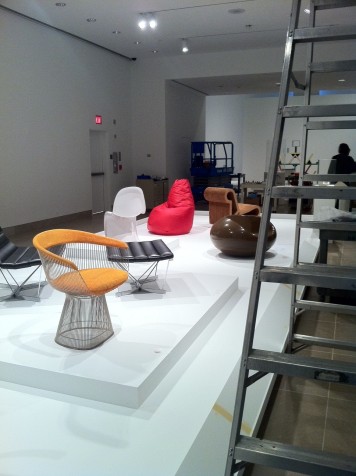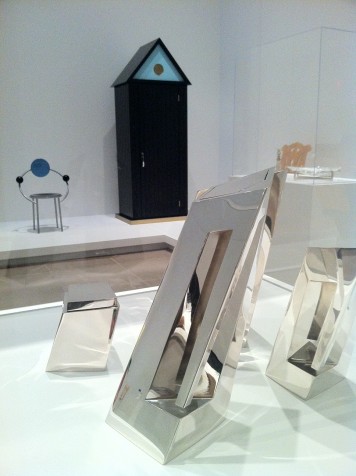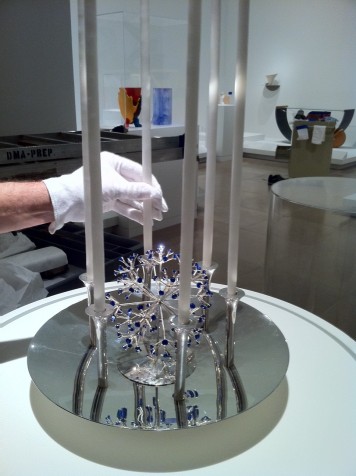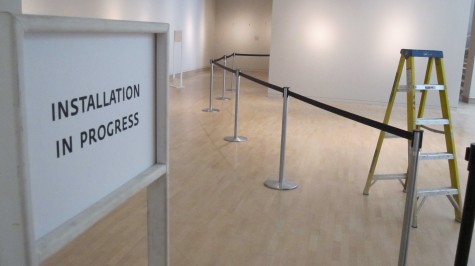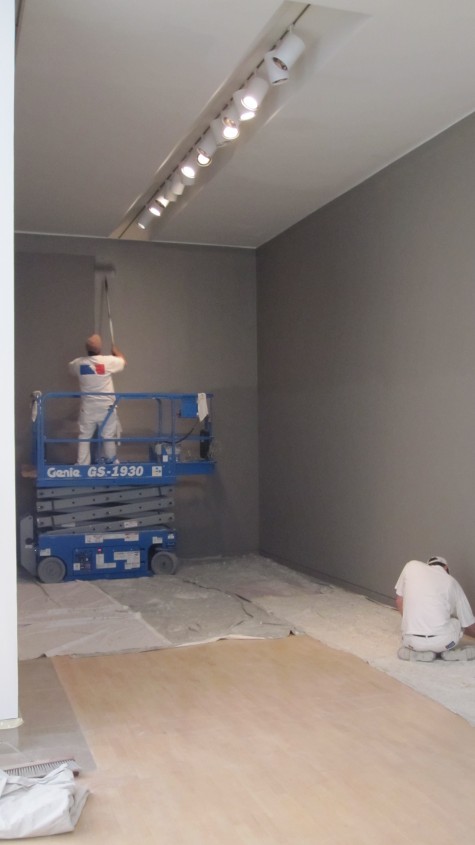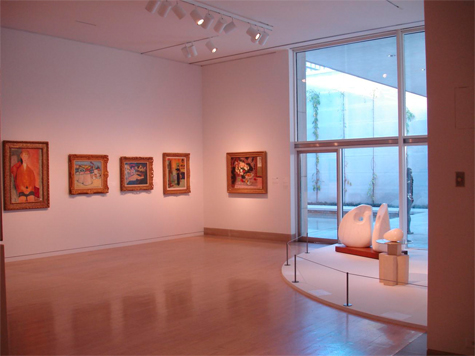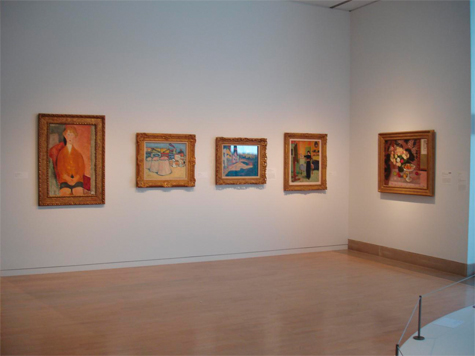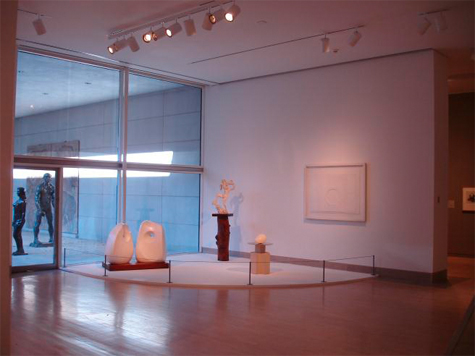Our new installation Re-Seeing the Contemporary displays more than fifty works of the art from the DMA’s captivating contemporary collection. Some of the artists on view range from familiar abstract expressionists to lesser known artists at work today. As 2010 comes to a close, we thought it might be fun to take another look at the exhibition, re-seeing the exhibition into our own top ten list of interesting categories.
1. Paintings: 29
The majority of artworks in the exhibition are paintings.
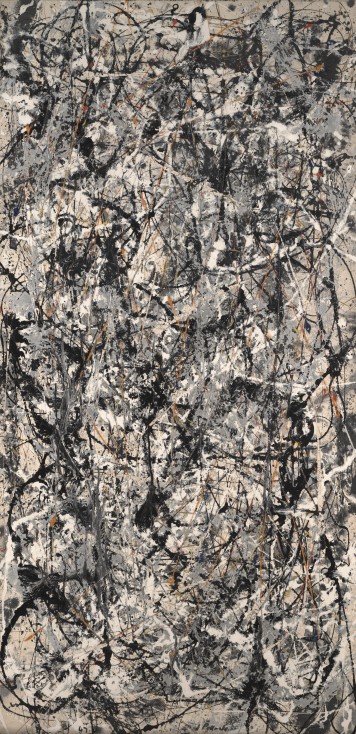
Jackson Pollock, Cathedral, 1947 Dallas Museum of Art, gift of Mr. and Mrs. Bernard
Pollock changed the definition of painting—instead of painting on the wall or an easel, he laid the canvas on the floor and applied paint to it from above through pouring and dripping.
2. Sculptures off the wall: 9
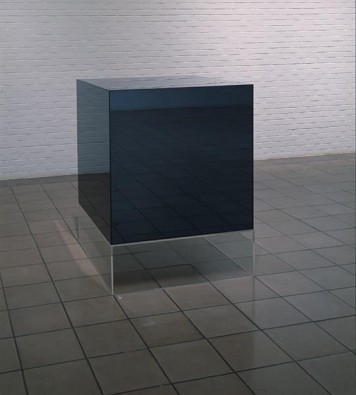
Larry Bell, The Cube of the Iceberg II, 1975 Dallas Museum of Art, anonymous gift in memory of J. O. Lambert, Jr.
Although not your typical figurative sculpture, this work has a reflective quality that involves the viewer.
3. Sculptures on the wall: 5
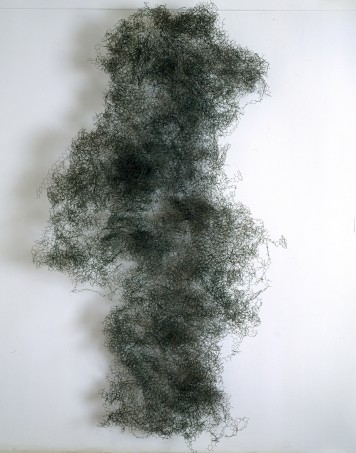
Alan Saret, Deep Forest Green Dispersion, 1969 Dallas Museum of Art, gift of John Weber
Though sculptures are typically displayed using a base or plinth, this work also fits the category because of its three-dimensionality. Since the piece is made out of wire and hangs off of one nail, it must be reshaped with each installation, almost becoming a living thing like the plants or moss it resembles.
4. Collages: 3
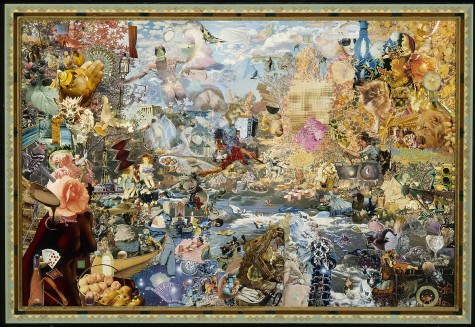
Jess, Arkadia's Last Resort; or, Fete Champetre Up Mnemosyne Creek, 1976 Dallas Museum of Art, General Acquisitions Fund
Jess took images from various sources such as jigsaw puzzles, art books, advertisements, and store catalogues and combined them to create a collage in the shape of a landscape.
5. Works never shown before: 6

Jack Whitten, Slip Zone, 1971 The Rachofsky Collection and the Dallas Museum of Art through the DMA/amfAR Benefit Auction Fund
A new acquisition that has not yet been on view, Slip Zone adds to the DMA’s collection of postwar abstract art. Whitten created the unique design by pulling various objects across the wet painted surface.
6. Works by women artists: 5
A few of the female artists are represented in the exhibition:
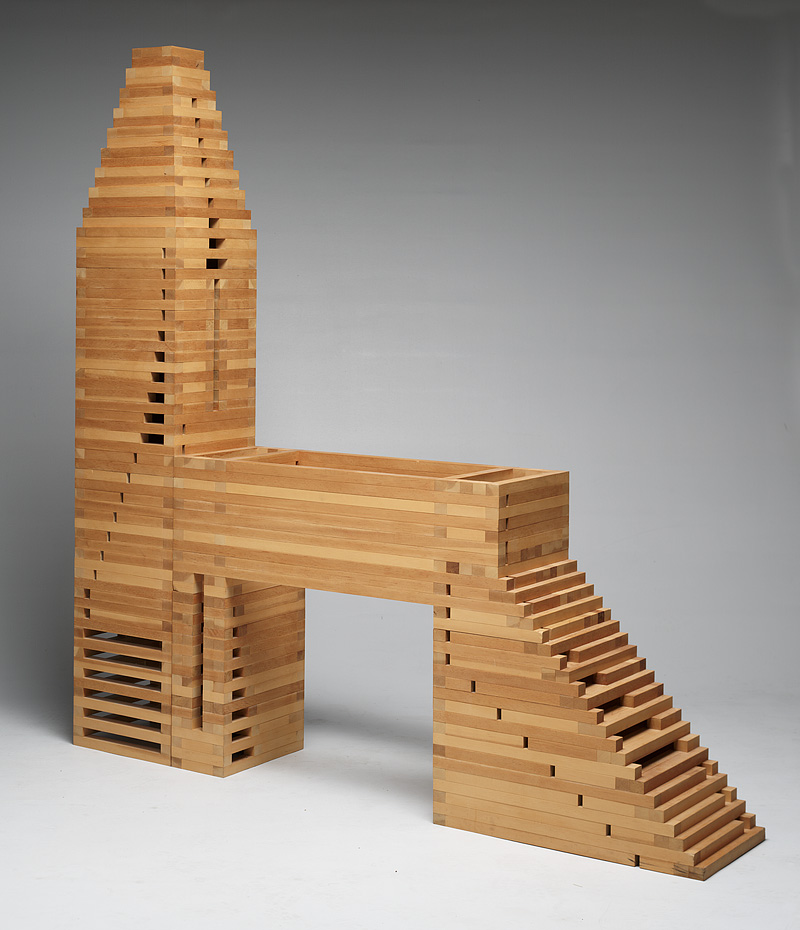
Jackie Ferrara, A213 Symik, 1982 Dallas Museum of Art, anonymous gift

Susie Rosmarin, Gingham, 1998 Dallas Museum of art, gift of Mr. and Mrs. Bryant M. Hanley, Jr., in honor of Charles Wylie, The Lupe Murchison Curator of Contemporary Art
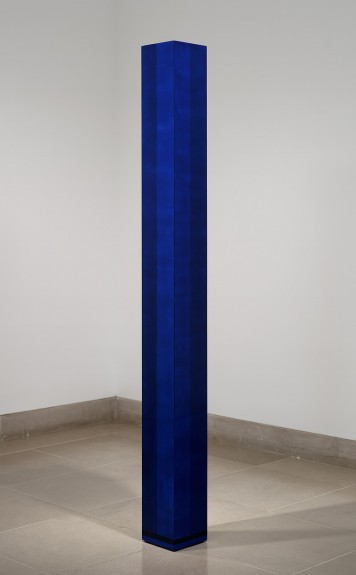
Anne Truitt, Come Unto These Yellow Sands II, 1979 Dallas Museum of Art, gift of Shonny and Hal Joseph (St. Louis, Missouri) in honor of Cindy and Armond Schwartz
7. Works by Texas artists: 2
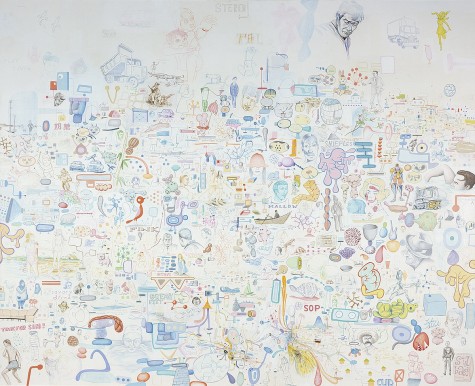
Christian Schumann, Nomads, 1998-1999 Dallas Museum of Art, Texas Artists Fund
Christian Schumann graduated from Booker T. Washington High School for the Performing and Visual Arts, located just blocks away from the DMA.
8. Works with people: 11
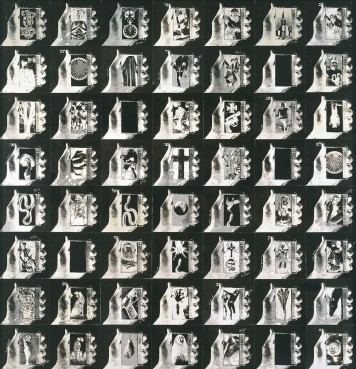
Wallace Berman, Untitled, 1964 Dallas Museum of Art, General Acquisitions Fund
At first glance, this collage may appear to be a repetition of the same picture. Upon further inspection, though, you can see that each hand holds a transistor radio, which in turn frames images of people, animals, and objects.
9. Works with text: 14

Glenn Ligon, Untitled, 2002 Dallas Museum of Art, DMA/amfAR Benefit Auction Fund
Inclusion of text is a modern development which Ligon often uses in his art. As the text progresses, it becomes more and more unclear.
10. Works with hot pink: 3
Pink is the color of happiness and works including hot pink just make us smile.
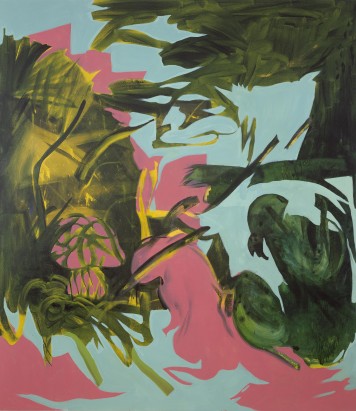
Charline von Heyl, Untitled (3/00), III, 2000 Dallas Museum of Art, gift of Kathleen and Roland Augustine in honor of Robert Hoffman
This painting, a recent museum acquisition, recalls a tropical rainforest inhabited by abstracted animal-like forms. The shocking combination of colors—yellow, green, turquoise, and hot pink—draw your attention to the composition.
Over the holidays we hope you will visit the DMA to discover the countless connections you can make with Re-Seeing the Contemporary and with the larger DMA collection.
Haley Berkman is the McDermott Curatorial Intern for Contemporary Art and Sarah Vitek is the McDermott Education Intern for Adult Programming at the Dallas Museum of Art.












